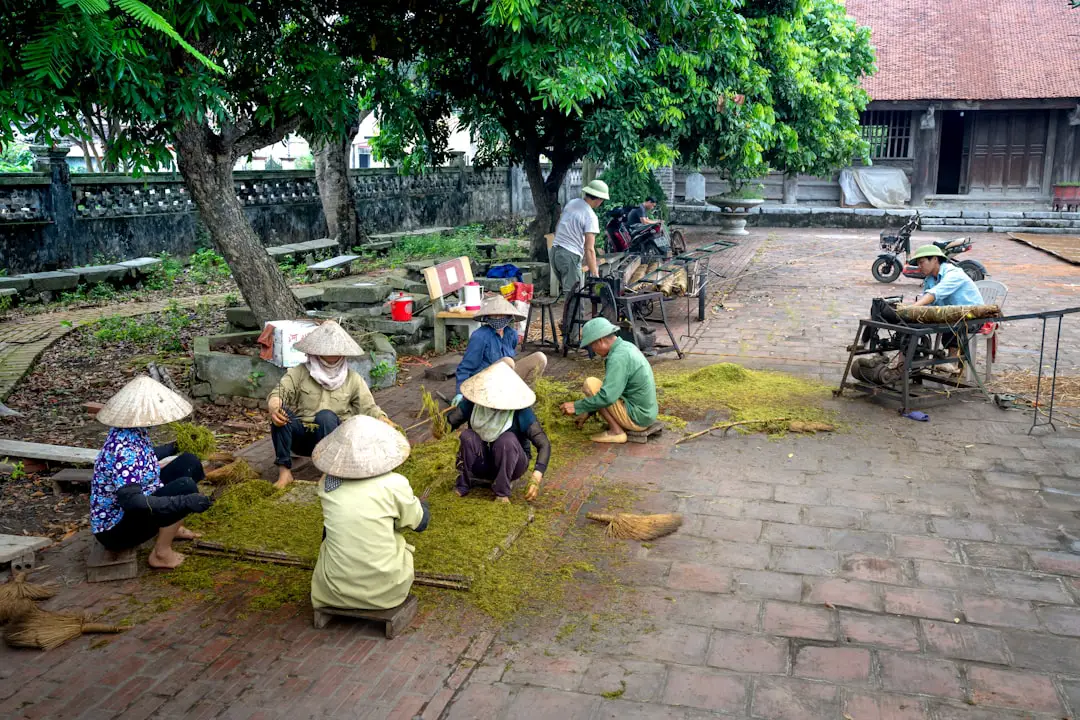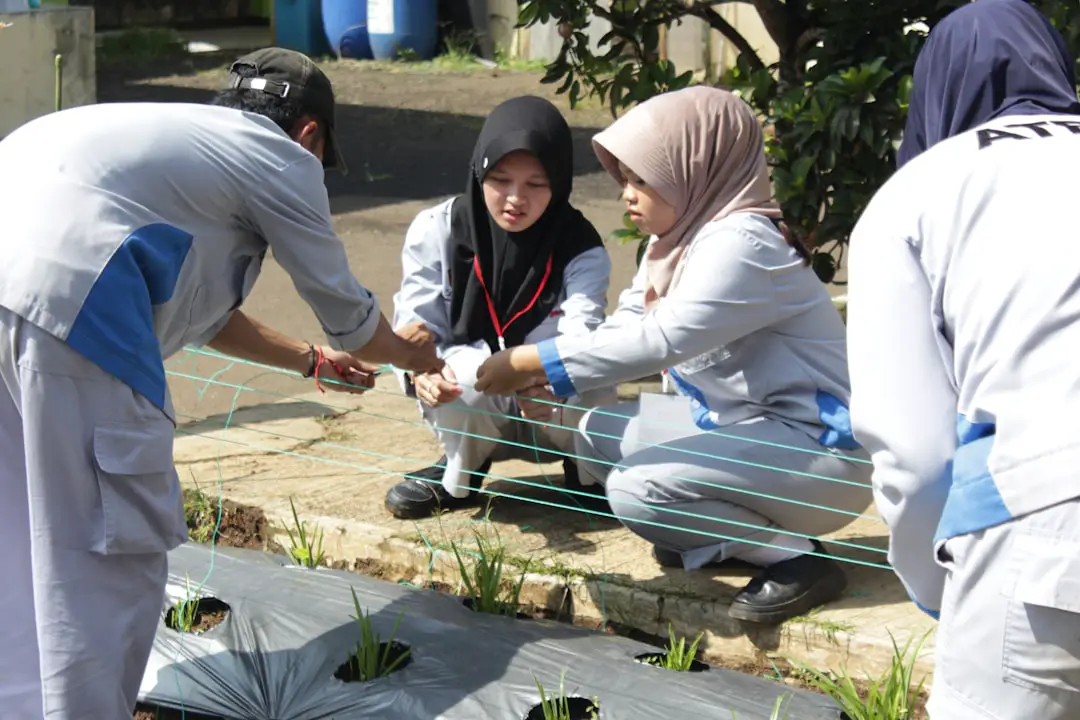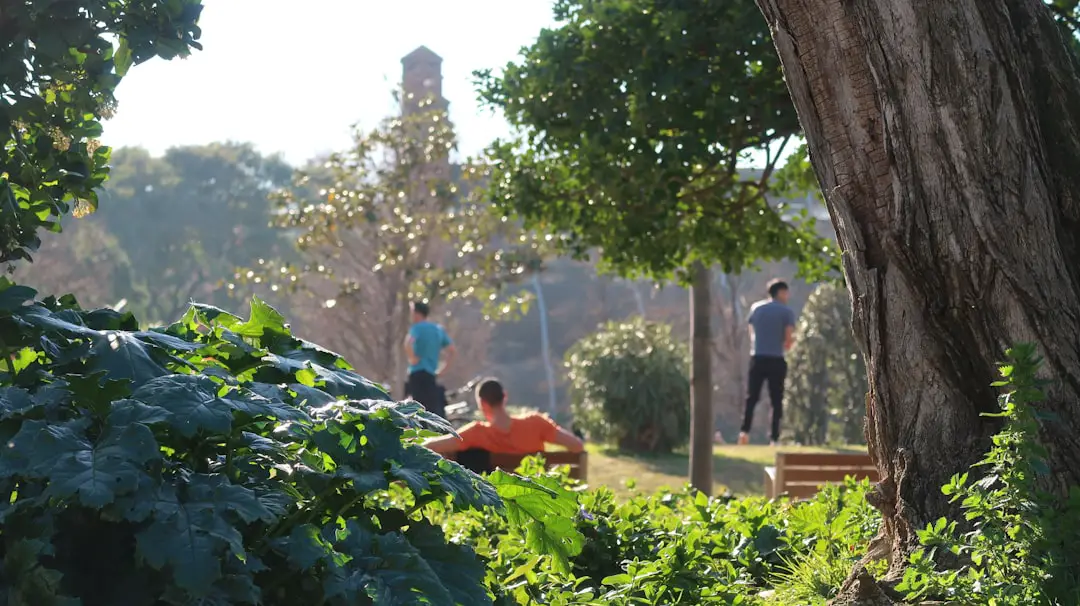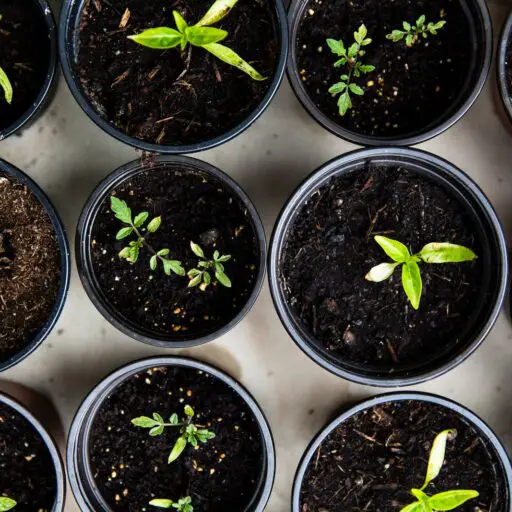Support our educational content for free when you purchase through links on our site. Learn more

Picture this: a once-vacant lot in the heart of your city transforms into a lush, buzzing community garden where neighbors gather, kids learn to grow their own food, and fresh vegetables flourish. But beyond the charm and greenery, how effective are community gardens really? Do they just look pretty, or do they deliver tangible benefits that ripple through communities? In this deep dive, we uncover 7 surprising truths about community gardens—from boosting mental health and local economies to greening urban spaces and building resilience. Whether you’re a curious city dweller or a seasoned gardener, you’ll discover why these green oases are more powerful than you might think.
Ready to dig in? We’ll also share practical tips, inspiring stories, and expert insights from Community Gardening™ to help you get involved or start your own thriving garden. Spoiler alert: the impact goes way beyond the soil!
Key Takeaways
- Community gardens foster strong social bonds and reduce urban isolation, creating vibrant neighborhood hubs.
- They improve mental and physical health by providing access to fresh produce and nature’s calming effects.
- Gardens contribute to environmental sustainability by reducing pollution, supporting biodiversity, and cooling urban heat islands.
- They serve as educational platforms for all ages, teaching sustainable gardening and food systems.
- Community gardens boost local economies and food security, especially in underserved areas.
- Success hinges on location, leadership, funding, and community engagement—all essential ingredients for flourishing gardens.
- Overcoming challenges like funding shortages and participation dips is possible with strategic planning and community-driven efforts.
🌱 Ready to equip your garden? Check out these essential tools and supplies:
- Gardening Tools: Amazon | Home Depot
- Seeds & Plants: Burpee Official Website | Etsy
Table of Contents
- 🌱 Digging In: Why Community Gardens Are More Than Just Dirt
- ⚡️ Quick Tips and Facts: Your Community Garden Cheat Sheet
- 🌍 The Roots of Community Gardening: A Brief History & Evolution of Urban Green Spaces
- 📈 Unearthing the Effectiveness: How Community Gardens Truly Flourish
- 1. Cultivating Community Connections: The Social Harvest
- 2. Growing Health and Well-being: A Prescription for Nature
- 3. Greening Our Cities: Environmental Benefits That Blossom
- 4. Sowing Seeds of Knowledge: Educational Opportunities for All Ages
- 5. Harvesting Economic Value: Boosting Local Economies and Food Security
- 6. Building Resilience: Strengthening Food Systems and Neighborhood Bonds
- 📊 Measuring the Harvest: Metrics for Community Garden Success and Impact Assessment
- 🛠️ Cultivating Success: Key Ingredients for a Thriving Community Garden Plot
- 🚧 Common Weeds: Challenges and How to Overcome Them in Your Community Garden
- 🌐 Beyond the Plot: Broader Societal Impacts of Community Gardens and Urban Agriculture
- 💖 Real-Life Blooms: Inspiring Community Garden Stories from Around the Globe
- 🧑🌾 Getting Your Hands Dirty: How to Start or Join a Community Garden Near You
- 📚 Tools of the Trade: Essential Resources for Every Community Gardener
- 🔮 The Future is Green: Innovations and Trends Shaping Community Gardening
- ✅ Conclusion: The Enduring Power of Community Gardens
- 🔗 Recommended Links: Dive Deeper into the World of Community Gardening
- ❓ FAQ: Your Burning Questions About Community Gardens Answered
- 📜 Reference Links: Our Sources for Growing Knowledge
Quick Tips and Facts: Your Community Garden Cheat Sheet
To get started with community gardening, it’s essential to understand the basics. As gardeners at Community Gardening™, we’ve compiled a list of quick tips and facts to help you navigate the world of community gardens. Before we dive in, if you’re considering joining a community garden, you might want to know what are the 12 surprising negatives of community gardens? 🌱.
Benefits of Community Gardens
Community gardens offer numerous benefits, including increased access to fresh produce, improved mental health, and enhanced sense of community. According to the American Community Gardening Association, there are over 18,000 community gardens in the US and Canada. These gardens not only provide a space for growing vegetables, fruits, and flowers but also serve as a hub for community engagement and education.
Getting Started
If you’re interested in starting or joining a community garden, here are some quick tips to get you started:
- Identify a leader or team to spearhead the effort
- Select and prepare a site, considering factors like soil quality and water access
- Organize volunteers and create a sign-up process
- Promote the garden to attract members and supporters
The Roots of Community Gardening: A Brief History & Evolution of Urban Green Spaces

Community gardening has a rich history, dating back to the 19th century. The concept of community gardening has evolved over time, with various initiatives and programs aimed at promoting urban agriculture and community engagement. For more information on the benefits of community gardens, visit our Benefits of Community Gardens page.
Historical Context
The idea of community gardening gained momentum during World War I, with the establishment of victory gardens. These gardens were created to promote food production and support the war effort. Today, community gardens continue to play a vital role in promoting food security, sustainability, and community development.
Unearthing the Effectiveness: How Community Gardens Truly Flourish
Community gardens are more than just a plot of land; they’re a hub for community activity, education, and social connection. But how effective are they in achieving their goals? Let’s take a closer look at the impact of community gardens.
1. Cultivating Community Connections: The Social Harvest
Community gardens provide a space for people to come together, share knowledge, and build relationships. This social aspect is a crucial component of community gardening, as it helps to foster a sense of belonging and community pride. For example, the Pennsylvania Horticultural Society supports over 170 community gardens and food production sites, promoting community engagement and education.
2. Growing Health and Well-being: A Prescription for Nature
Community gardens offer numerous health benefits, including increased access to fresh produce, improved mental health, and reduced stress levels. According to a study by the Tulane University School of Public Health and Tropical Medicine, community gardens can play a critical role in promoting public health and well-being.
3. Greening Our Cities: Environmental Benefits That Blossom
Community gardens help to reduce urban pollution, mitigate the urban heat island effect, and promote biodiversity. By transforming vacant lots into green spaces, community gardens can have a significant impact on the environment. For more information on sustainable gardening practices, visit our Garden Design Ideas page.
4. Sowing Seeds of Knowledge: Educational Opportunities for All Ages
Community gardens provide a unique opportunity for people of all ages to learn about sustainable gardening practices, nutrition, and environmental stewardship. Many community gardens offer workshops, classes, and other educational programs to promote knowledge sharing and skill building.
5. Harvesting Economic Value: Boosting Local Economies and Food Security
Community gardens can have a significant impact on local economies, providing fresh produce, job opportunities, and community investment. By supporting local food systems, community gardens can help to promote food security and economic development.
6. Building Resilience: Strengthening Food Systems and Neighborhood Bonds
Community gardens help to build resilient food systems, strengthen neighborhood bonds, and promote community cohesion. By fostering a sense of community and cooperation, community gardens can play a critical role in building stronger, more resilient communities.
Measuring the Harvest: Metrics for Community Garden Success and Impact Assessment
Evaluating the success of community gardens requires a comprehensive approach, considering factors like participation rates, produce yields, and community engagement. To measure the impact of community gardens, it’s essential to establish clear metrics and benchmarks. For more information on community garden policies, visit our Community Garden Policies page.
Metrics for Success
Some key metrics for evaluating community garden success include:
- Participation rates and member engagement
- Produce yields and distribution
- Community outreach and education programs
- Economic impact and job creation
- Environmental benefits and sustainability
Cultivating Success: Key Ingredients for a Thriving Community Garden Plot
Creating a thriving community garden requires a combination of key ingredients, including effective leadership, community engagement, and sustainable practices. Here are some essential elements to consider:
Location, Location, Location: Finding the Perfect Spot
When selecting a site for your community garden, consider factors like soil quality, water access, and sunlight. It’s also essential to ensure that the site is accessible and visible to the community.
Leadership and Governance: Steering the Ship
Effective leadership and governance are critical to the success of a community garden. This includes establishing clear goals and objectives, defining roles and responsibilities, and fostering a sense of community ownership.
Funding and Resources: Keeping the Garden Green
Securing funding and resources is essential to the long-term sustainability of a community garden. This can include grants, donations, and community fundraising events. For more information on community garden events, visit our Community Garden Events page.
Community Engagement and Participation: The Heart of the Garden
Community engagement and participation are the heart of a thriving community garden. This includes outreach and education programs, volunteer opportunities, and community events.
Sustainable Design and Practices: Nurturing the Earth
Sustainable design and practices are essential to the long-term success of a community garden. This includes using organic and permaculture principles, conserving water and energy, and reducing waste. For more information on edible plants and sustainable gardening practices, visit our Edible Plants page.
Common Weeds: Challenges and How to Overcome Them in Your Community Garden
Despite the many benefits of community gardens, there are also challenges to overcome. Here are some common weeds to watch out for and strategies for overcoming them:
Funding and Resource Constraints
One of the most significant challenges facing community gardens is funding and resource constraints. To overcome this, consider applying for grants, hosting fundraising events, and seeking donations.
Lack of Community Engagement
Another challenge is lack of community engagement. To overcome this, consider outreach and education programs, volunteer opportunities, and community events.
Environmental Challenges
Community gardens may also face environmental challenges, such as soil contamination, water scarcity, and climate change. To overcome these challenges, consider using sustainable practices, conserving water and energy, and reducing waste.
Beyond the Plot: Broader Societal Impacts of Community Gardens and Urban Agriculture
Community gardens have a broader impact on society, extending beyond the plot to influence food systems, urban planning, and community development. For more information on the benefits of community gardens, visit our Benefits of Community Gardens page.
Food Systems and Security
Community gardens play a critical role in promoting food security and sustainable food systems. By providing access to fresh, locally grown produce, community gardens can help to reduce food deserts and improve public health.
Urban Planning and Development
Community gardens can also influence urban planning and development, promoting green spaces, sustainable design, and community engagement. By transforming vacant lots into community gardens, cities can revitalize neighborhoods, improve air quality, and enhance biodiversity.
Community Development and Social Cohesion
Community gardens foster community development and social cohesion, providing a space for people to come together, share knowledge, and build relationships. This can help to strengthen neighborhood bonds, promote community pride, and foster a sense of belonging.
Real-Life Blooms: Inspiring Community Garden Stories from Around the Globe
Community gardens are not just limited to the United States; they can be found in cities and towns around the world. Here are some inspiring stories of community gardens from around the globe:
Urban Agriculture in Cuba
In Cuba, community gardens have played a critical role in promoting urban agriculture and food security. With limited access to resources, Cuban community gardens have developed innovative strategies for sustainable gardening, composting, and irrigation.
Community Gardens in Africa
In Africa, community gardens are helping to promote food security, improve nutrition, and empower women. With the support of organizations like the Africa Community Garden Network, community gardens are sprouting up in cities and towns across the continent.
Green Spaces in Europe
In Europe, community gardens are being used to promote green spaces, sustainable design, and community engagement. With the support of organizations like the European Community Garden Network, community gardens are helping to revitalize neighborhoods, improve air quality, and enhance biodiversity.
Getting Your Hands Dirty: How to Start or Join a Community Garden Near You
Starting or joining a community garden can be a rewarding experience, providing opportunities for community engagement, education, and personal growth. Here are some steps to get you started:
Finding a Community Garden
To find a community garden near you, consider searching online, contacting local gardening organizations, or reaching out to community groups.
Starting a Community Garden
To start a community garden, consider identifying a leader or team, selecting a site, and organizing volunteers. You’ll also need to secure funding and resources, develop a plan, and promote the garden.
Tools of the Trade: Essential Resources for Every Community Gardener
As a community gardener, it’s essential to have the right tools and resources to ensure success. Here are some essential resources to get you started:
Gardening Tools and Equipment
Some essential gardening tools and equipment include shovels, rakes, hoes, and watering cans. You may also need seeds, fertilizers, and pest control measures.
Gardening Books and Guides
Some recommended gardening books and guides include “The Community Gardening Handbook”, “The Urban Farmer”, and “The New Seed Starter’s Handbook”.
Online Resources and Communities
Some online resources and communities include gardening forums, social media groups, and online courses. These can provide valuable information, support, and networking opportunities for community gardeners.
The Future is Green: Innovations and Trends Shaping Community Gardening
Community gardening is constantly evolving, with new innovations and trends emerging all the time. Here are some of the latest developments shaping the world of community gardening:
Sustainable Gardening Practices
One of the most significant trends in community gardening is the adoption of sustainable gardening practices, including organic gardening, permaculture, and regenerative agriculture.
Urban Agriculture and Vertical Farming
Another trend is the growth of urban agriculture and vertical farming, which involve using hydroponics, aquaponics, and aeroponics to grow crops in cities and urban areas.
Community Engagement and Education
Community engagement and education are also critical components of community gardening, with many gardens offering workshops, classes, and outreach programs to promote knowledge sharing and skill building.
To learn more about community gardening and get involved, visit our website at Community Gardening and explore our resources, including Benefits of Community Gardens, Community Garden Events, and Garden Design Ideas. You can also check out our Edible Plants section for tips on growing your own food.
For gardening tools and equipment, you can shop on:
- Amazon: Search for gardening tools | Gardening best sellers
- Walmart: Gardening tools and equipment | Gardening department
- Etsy: Gardening gifts and decor | Gardening supplies
- Home Depot Official Website: Gardening tools and equipment
- Burpee Official Website: Gardening seeds and supplies
Remember to always follow sustainable gardening practices and support local food systems. Happy gardening! 🌱
Conclusion: The Enduring Power of Community Gardens

Community gardens are much more than just patches of green in urban jungles; they are living, breathing ecosystems of community, health, education, and sustainability. From our experience at Community Gardening™, the evidence is clear: community gardens effectively promote social cohesion, improve mental and physical health, enhance local food security, and contribute to environmental stewardship.
We’ve explored the rich history, the multifaceted benefits, and the practical steps to cultivate a thriving garden. Along the way, we addressed common challenges and highlighted inspiring stories from around the world. Remember that while community gardens are not a silver bullet for all urban issues, their positive ripple effects on neighborhoods and individuals are profound and measurable.
If you’re wondering about the downsides mentioned earlier, such as funding difficulties or community engagement hurdles, rest assured that these can be overcome with strong leadership, inclusive governance, and sustained community involvement. The key is to view community gardening as a long-term investment in people and place.
So, whether you’re a seasoned gardener or a curious newcomer, we confidently recommend diving into the world of community gardening. It’s a rewarding journey that grows far beyond the soil — nurturing friendships, knowledge, and healthier communities.
Recommended Links: Your Green Thumb Toolkit 🌿
Gardening Tools & Supplies
- Amazon: Gardening Tools | Seeds & Plants
- Walmart: Gardening Equipment
- Etsy: Unique Gardening Supplies
- Home Depot Official Website: Gardening Tools & Equipment
- Burpee Official Website: Seeds & Gardening Supplies
Recommended Books on Community Gardening & Urban Agriculture
- The Community Gardening Handbook by Ben Raskin — Amazon Link
- The Urban Farmer by Curtis Stone — Amazon Link
- The New Seed Starter’s Handbook by Nancy Bubel — Amazon Link
FAQ: Your Burning Questions About Community Gardens Answered

What are the benefits of community gardening for mental health and wellbeing?
Community gardens serve as natural therapy spaces that reduce stress, anxiety, and depression. Studies, including those cited by the Pennsylvania Horticultural Society, show that greening vacant urban spaces can reduce feelings of depression by up to 60%. The act of gardening promotes mindfulness, physical activity, and social interaction — all proven to boost mental wellbeing. Plus, the satisfaction of nurturing plants and harvesting food fosters a sense of accomplishment and purpose.
Read more about “15 Surprising Benefits of Gardening You Need to Know in 2025 🌿”
How do community gardens impact local food systems and sustainability?
Community gardens strengthen local food systems by increasing access to fresh, nutritious produce, especially in food deserts. They reduce reliance on long-distance food transport, lowering greenhouse gas emissions and food waste. Gardens often employ organic and sustainable practices, enhancing soil health and biodiversity. By fostering local production, they contribute to food security, resilience, and environmental sustainability.
Read more about “What Are the 12 Surprising Negatives of Community Gardens? 🌿 (2025)”
Can community gardens help build stronger, more cohesive communities?
Absolutely! Community gardens act as social hubs where diverse groups come together, share knowledge, and collaborate. This builds trust, reduces social isolation, and fosters a shared sense of ownership and pride. The California Healthy Cities and Communities program highlights how inclusive gardens empower diverse populations and strengthen community capacity, leading to improved public health and social capital.
Read more about “7 Surprising Ways a Community Garden Brings People Together 🌿 (2025)”
What role do community gardens play in promoting environmental education and stewardship?
Community gardens are living classrooms where people of all ages learn about ecology, sustainable agriculture, and conservation. Workshops and hands-on experience teach participants about soil health, composting, water conservation, and pollinator support. This education fosters environmental stewardship, encouraging gardeners to adopt eco-friendly practices both in and beyond the garden.
How can I overcome common challenges like funding and community engagement in my garden?
Challenges like limited funding and fluctuating participation are common but manageable. Successful gardens often secure grants from local governments or nonprofits, host fundraising events, and build partnerships with businesses. To boost engagement, organize regular events, workshops, and social gatherings that make the garden a vibrant community space. Leadership development and clear communication are key to sustaining momentum.
Reference Links: Our Sources for Growing Knowledge
- California Healthy Cities and Communities (CHCC) Community Garden Programs: https://pmc.ncbi.nlm.nih.gov/articles/PMC1447988/
- Tulane University School of Public Health on Community Gardens: https://publichealth.tulane.edu/blog/benefits-of-community-gardens/
- Pennsylvania Horticultural Society (PHS) Benefits of Community Gardens: https://phsonline.org/for-gardeners/gardeners-blog/benefits-of-community-gardens
- American Community Gardening Association: https://www.communitygarden.org/
- Community Gardening™ Categories:
Dive deeper and keep growing with us! 🌿


